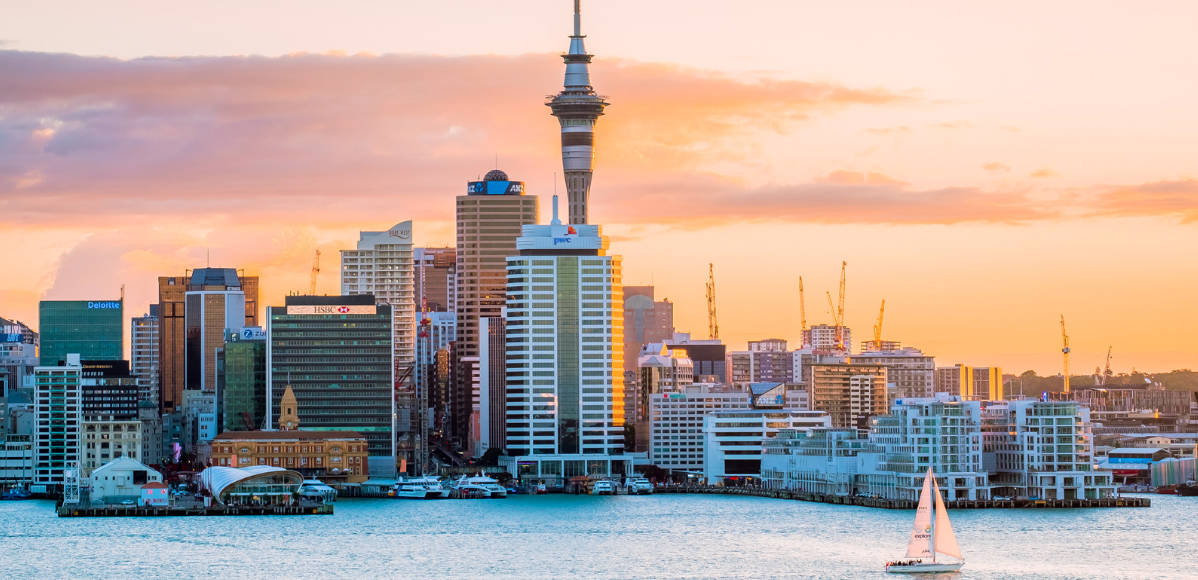Last week, Australia welcomed New Zealand’s Prime Minister Jacinda Adern, with the two countries discussing everything from climate change to trade, foreign policy and economic recovery. A meeting between Adern and Albanese also served as a way of setting the agenda for trans-Tasman cooperation as we approach 2023, when New Zealand and Australia will officially celebrate 40 years of our Closer Economic Relations trade agreement! With New Zealand being one of our closest neighbours, it provides some distinct opportunities for Australian exporters seeking to venture beyond the domestic market!
A Robust and Wealthy Economy
Despite being a small and isolated nation, New Zealand’s economy is stable and highly developed, with the country boasting a substantial per capita GDP of US$38,675. COVID-19 highlighted the especially resilient nature of the New Zealand economy, which was largely thanks to New Zealand’s swift mitigation measures which saw economic growth remain relatively consistent during the early months of the pandemic. In fact, New Zealand was the only OECD country to record positive growth in the quarter preceding September 2020. This has had a positive domino effect on consumers, with both consumer sentiment and spending staying comparatively high compared to other Western countries.
While there have of course been ups and downs throughout the pandemic as COVID-19 eventually reached New Zealand’s shores, the country has dealt with its effects relatively well. Following a surge in infections in early 2022, private consumption fell, while additional factors including supply chain disruptions and a tight labour market saw inflation rise to its highest levels since 1990. Inflation, is however, set to decline as monetary policy tightens. Meanwhile, GDP growth reached 5% in 2021, but will slow to 3% and 2% in the following two years, demonstrating economic growth is expected to moderate somewhat, while private consumption recovers in Q2 to boost demand for goods and services.
An Optimal Trade and Business Environment
Perhaps the most attractive aspect of New Zealand as an export market is its highly developed society and ease of doing business. The island maintains one of the highest Quality of Living and Human Development rankings globally, at 3 out 190 countries and 14th out of 189 countries, respectively. Impressively, New Zealand also ranks first globally on the Ease of Doing Business network, and maintains a sophisticated logistics network which is ranked 15th out of 160 countries thanks to its timeliness, logistics quality, strong infrastructure and relatively efficient customs procedures.
Benefitting especially from these factors is Australia, which maintains extremely close economic ties with Australia. The ASEAN-Australia-New Zealand Free Trade Agreement, as well as the Closer Economic Relations Trade Agreement (ANZCERTA), have both seen trade volumes between Australia and New Zealand improve in recent decades. Meanwhile, New Zealand, like Australia, is also party to the Comprehensive and Progressive Agreement for Trans-Pacific Partnership, as well as the Pacific Agreement on Closer Economic Relations.
These agreements significantly improve market access for Australia exporters, with ANZCERTA eliminating tariffs on all Australian-made products containing over 50% Australia content. The agreement also harmonised Trans-Tasman food standards, which is a big win considering the lower compliance costs and regulatory barriers it creates.
The Mindset of the New Zealand Consumer
While New Zealand’s population is only a fraction that of Australia, it does present a unique opportunity for Australian exporters to expand their market size while remaining close to home in a culture which shares largely similar cultural mindsets. The population, much like Australia’s, is highly urbanised with over 87.2% of New Zealanders living in urban areas, thus easing the path for exporters to reach consumers.
So, what is the New Zealand consumer looking for? Everyone loves a bargain, and New Zealanders are no exception! They’re keen on finding discounts and promotions on food and beverage products, with most consumers always on the lookout for special offers. They’re also among some of the most health-oriented and eco-conscious consumers globally–they’re hungry for plant-based foods and reducing their meat consumption, a trend which is magnified in younger generations who are often categorised into segments including ‘meat-reducers’ and ‘flexitarians.’
On the flipside, regarding what consumers aren’t looking for, brands don’t play a key role in purchasing decisions. New Zealanders are relatively conservative when it comes to brand loyalty, with only around 25% of the population looking out for new brands, rather than 42% globally. This is good news for Australian exporters though, who generally rely on consumer willingness to try new brands and products if they wish to get their foot in the market.
Channel Developments Mirror Global Trends
Looking at channel trends, New Zealand largely echoes those trends seen across the rest of the world during COVID-19. While overall consumer spending fell, groceries have been the exception and in fact, spending in this area has risen. Shopping trips have risen in value, while falling in frequency. And, online shopping has indeed seen online grocery sales skyrocket.
Some other interesting trends include the rise of the home brand, with some home brands seeing growth at three times the pace of other brands. New Zealand also maintains a consistently higher level of grocery purchases bought using promotional deals, at over 50% of total sales. Another global phenomenon reaching New Zealand is the growth of smaller format supermarkets, with chains investing to counteract the dominance of convenience stores which seek to attract similar target markets of time-poor, convenience-seeking consumers.
The foodservice sector also reveals some key consumer preferences. Third party delivery apps have become more popular, and throughout the pandemic, they’ve revealed the New Zealand consumer’s preference for Asian foods such as Thai and Indian, which is largely driven by their passion for travel. Burger and chicken restaurants, which are primarily fast food chains, have seen the fastest sales growth in the past five years, indicating consumer desire for quick and convenient meal options. Fish has also become an increasingly popular menu item in foodservice, owing to its perception as a more eco-friendly meal choice, as well as the rise in flexitarianism and pescetarianism.
Consumer and Channel Trends Echoed in Category Data
Overall, in 2021, New Zealand’s food industry was worth US$11.57 billion! While growth has been relatively slow these past few years, it is expected to pick up, with an expected CAGR of 4.83% to 2026 bringing the predicted industry value to US$14.64 billion. Like most developed countries, the non-alcoholic beverages category is relatively stagnant and expected to decline, alcoholic averages are expected to see significant growth of up to a 6.42% CAGR to 2026, boosting industry value to US$11.02 billion.
If we look more specifically at categories poised for growth, we can see aforementioned trends mirrored in the data. The shift away from red meat is reflected with consistent growth in fish and seafood, and rapid growth for meat substitutes. Meanwhile, demands for convenience are reflected in strong growth amongst canned, dried and frozen foods, pasta and noodles, soups and prepared meals. Further categories to watch include alcoholic beverages, especially spirits, savoury and deli foods, and savoury snacks and sauces.
Wrap Up
That wraps up our investigation of the New Zealand market! Our Trans-Tasman neighbour exhibits many of the factors deemed preferential for export, including a stable and wealthy economy, and an optimal trade and business environment with preferential treatment for Australian exporters through various trade agreements. Despite being a small market compared to other popular Australian export markets, population trends largely mirror those of Australia, with high levels of urbanisation, convenience-seeking behaviours and a health- and eco-conscious consumer base.
We hope you’ve found these insights on the the New Zealand market helpful. As always, if you’ve got any questions or want to discuss export opportunities for your company, feel free to drop us a line at Export Connect – we’d love to hear from you.




